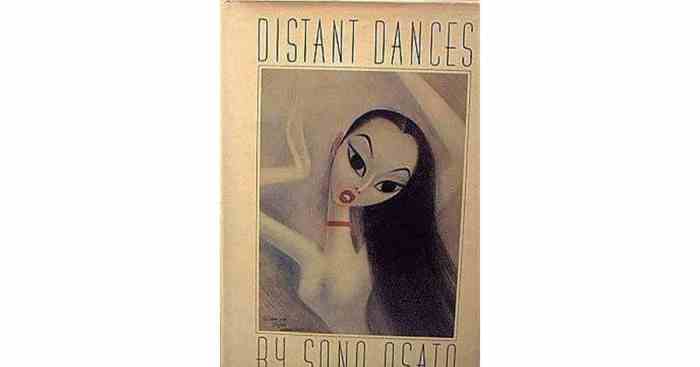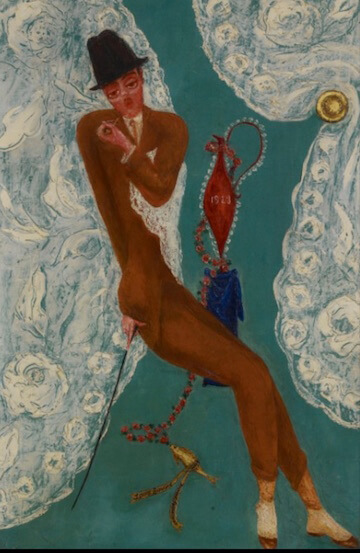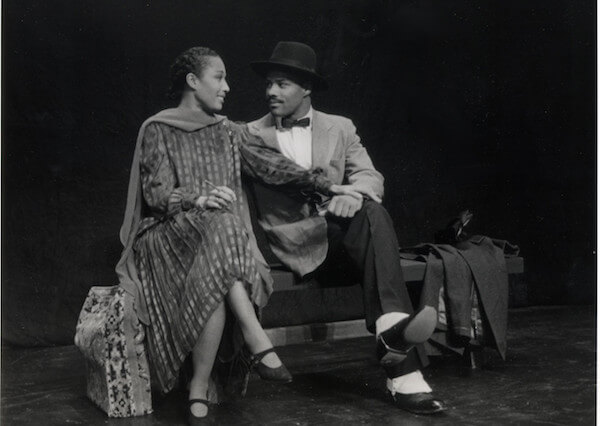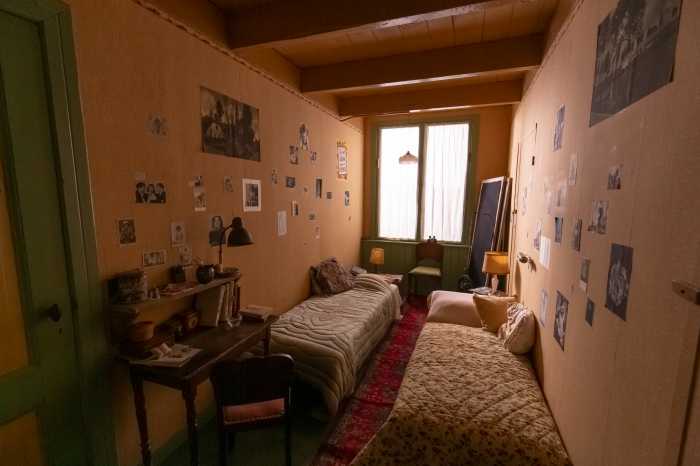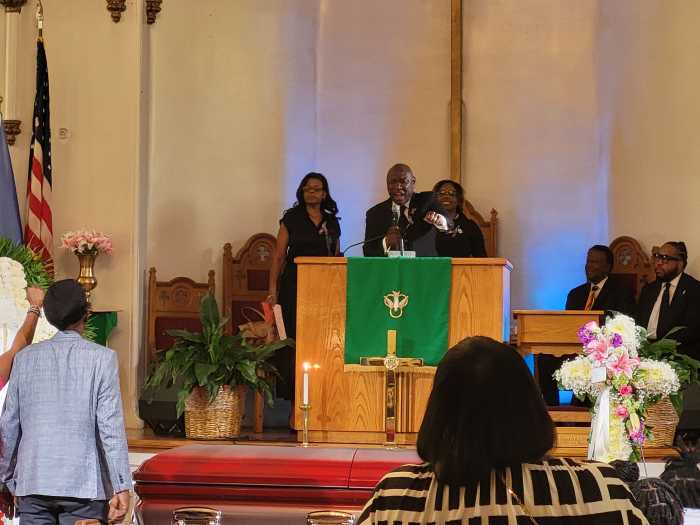Published by the University of Chicago Press.
BY DOUG IRELAND| Fresh scholarship illuminating the queer writers and artists at the core of the Harlem Renaissance of the 1920s continues to throw into sharp relief some of that important cultural moment’s unjustly forgotten talents.
Hard on the heels of Emily Bernard’s important “Carl Van Vechten and the Harlem Renaissance” (see my September 26-October 9 review, “A Queer Bridge for Racial Divides”) comes now the first full-length biography of Countée Cullen, the gifted poetic prodigy who began to win fame when he was only 20 and died in 1946 at the young age of 42 of a cerebral hemorrhage brought on by hypertension.
Although Cullen was one of America’s most admired poets in the 1920s, his struggle to survive the penury of the Great Depression dried up his poetic talent, and he spent the last decade of his life in comparative obscurity as a teacher of French in Harlem’s Frederick Douglass Junior High School — where James Baldwin was one of his admiring students — having failed to obtain the university post he deserved and which would have allowed him the time to pursue his poetic quest.
It is not easy to write a biography of a man who left no diaries or journals in which he recorded his inner emotional life, and if there were any documents that detailed his homosexuality, Cullen took care to destroy them.
But there is no doubt that Cullen’s sexual orientation was overwhelmingly toward other men. Indeed, his first, brief marriage, to W.E.B. Du Bois’ daughter Yolande, foundered on the issue of Cullen’s same-sex preferences almost before it began when he went on his “honeymoon” to Paris not with Yolande but with one of his great loves, bon vivant Harold Jackman, a French and social studies teacher known as “the Proust of Lenox Avenue” — a reference to both his refinement and his sexual orientation. The “honeymoon” incident was the subject of speculation and innuendo in the black press at that time.
London-born of West Indian parentage, Jackman — who was called “the handsomest man in Harlem” by his contemporaries — wrote a bit and acted a bit, but left behind no oeuvre. He was, nonetheless, a catalytic figure in the gay life at the center of the Harlem Renaissance, many of whose queer members Jackman had introduced to each other and either slept with him or had a crush on him. The ubiquitous Jackman, light-skinned and an elegant dresser, appears as a character in Van Vechten’s scandal-causing 1926 novel “Nigger Heaven,” and both he and Cullen are major figures in Wallace Thurman’s satirical 1936 novel about the Harlem Renaissance, “Infants of the Spring.”
Jackman, whose massive correspondence, diaries, and noted collection of African-American memorabilia — which he named the Countée Cullen Collection in honor of his prematurely deceased friend — serve as a touchstone for all historians of the Renaissance, deserves a full-length biography of his own.
In a letter to her world-famous father explaining the failure of her marriage, Yolande Du Bois laid the blame squarely on Cullen’s homosexuality.
“I never loved him,” she wrote, “but I had an enormous amount of respect for him. Having lost that — and having an added feeling of horror at the abnormality of it I could not ‘make it.’ I knew something was wrong physically, but being very ignorant and inexperienced I couldn’t be sure what. When he confessed things he’d always known that he was abnormal sexually as far as other men were concerned [italics in the biography’s text] then many things became clear.”
And she added, “At first I felt terribly angry — I felt he’d no right to marry any woman knowing this. Now I only feel sorry for him and all I want is not to have to be anywhere near him.”
“And Bid Him Sing: A Biography of Countée Cullen,” is written by Charles Molesworth, a Queens College literature professor of 40 years who now writes an art columnist for Salmagundi. Molesworth is also the biographer of Alain Locke, the Howard University philosopher who was a central figure in the Harlem Renaissance, having edited “The New Negro,” the first collection of writing by Renaissance writers, published in 1925. Locke, who was also queer, was an important mentor to Cullen and other important Renaissance figures.
The title of Molesworth’s book comes from a short Cullen poem, “Yet Do I Marvel”:
I doubt not God is good, well-meaning, kind,
And did He stoop to quibble could tell why
The little buried mole continues blind,
Why flesh that mirrors Him must someday die,
Make plain the reason tortured Tantalus
Is baited by the fickle fruit, declare
If merely brute caprice dooms Sisyphus
To struggle up a never-ending stair.
Inscrutable His ways are, and immune
To catechism by a mind too strewn
With petty cares to slightly understand
What awful brains compels His awful hand.
Yet do I marvel at this curious thing:
To make a poet black, and bid him sing!
The mixture of gentle irony and despair in this poem capture the reserved, secretive Cullen’s inner conflicts, which included the challenge of being black in a racist world, of being homosexual in a straight and homophobic one, and of being a lyrical poet heavily influenced by the 19th century English Romantics at a time when such literary formalism was being discarded in favor of plainer, every-day speech and dialect poetry — such as in the work of Cullen’s close friend Langston Hughes, another queer to whom Cullen is usually counterposed as the polar opposite.
Molesworth does a superb job of portraying Cullen’s struggle to define and maintain his own personal aesthetic. He also successfully challenges the over-simplicity of the opposition of Cullen and Hughes, two poets who were long engaged in dialogue, both in person and correspondence, about aesthetic matters.
Irony was again present in “More Than a Fool’s Song,” a poem Cullen dedicated to another of his lovers, Edward Perry, a dancer and Broadway actor with whom Cullen had an affair in the late ‘20s. The poem’s ending can be read as a closeted nod to the same-sex orientation he and Perry shared:
The world’s a curious riddle thrown
Waterwise from heaven’s cup;
The souls we think are hurtling down
Perhaps are climbing up.
Cullen seems to have been somewhat ashamed of his childhood upbringing by his grandmother in what Molesworth describes as “Dickensian” poverty, before he was adopted at the beginning of his adolescence by one of Harlem’s most prominent ministers, Reverend Frederick Cullen. The first 14 years of young Cullen’s life “remain largely a blank,” Molesworth writes, and even his place of birth —Kentucky? Harlem? — remains uncertain. Still, Molesworth does a yeoman job of reconstructing those early years.
The poet later described his life as a never-ending conflict between his Christian upbringing and the side of his life he labeled “pagan” (read: homosexual).
As a teenager, Cullen earned prize after prize for his poetry and won the imagist poet Witter Bynner’s poetry prize when he was still a scholarship student at New York University, by which time he’d already seen his work published by H.L. Mencken in the American Mercury.
After winning another scholarship for postgraduate work at Harvard and publishing his first book of poems, “Color,” with Harper in 1925, Cullen won a Guggenheim Fellowship that allowed him to spend two years in Paris, which he adopted as his “second home” and where he spent 12 consecutive summers. The late ‘20s were productive ones for Cullen, whose new volumes of poetry — “Copper Sun,” “Harlem Wine,” “The Ballad of the Brown Girl,” and “The Black Christ” — won him nearly universal critical acclaim.
But the Depression put an end to Cullen’s poetry. He tried to make a living as a novelist, but while his debut effort, 1931’s “One Way to Heaven,” was well-received critically (the New York Times said it was “not to be missed”), it proved a disappointment financially and he found writing it so difficult he never wrote another.
He spent the last decade of his life trying to jump-start a career writing plays for the theater, but they remained unproduced, including “Medea,” the first translation by an African-American writer of a Greek tragedy (he also translated Baudelaire and other French poets). “St. Louis Woman,” a play that he and Arna Bontemps adapted from a Bontemps novel, ran on Broadway for 113 performances in 1946. Cullen, however, died the second week of that year, an irony not without meaning in Molesworth’s view.
Because its subject was a prostitute, even before it was produced, “St. Louis Woman” was attacked by what were then called “race men,” who hadn’t even read it, because it depicted unattractive aspects of Negro life at a time when racial politics demanded a literature of “uplift” filled with positive black images. Molesworth speculates that the strain of fighting these misguided attempts at censorship may have led to Cullen’s untimely death.
But it is for his poems on race that Cullen is largely remembered today. As Langston Hughes wrote on the death of his friend, “Among the most beautiful of his poems was ‘Heritage,’ which asked, ‘What Is Africa to Me?’ Had the word negritude been in use in the twenties, Cullen as well as [Claude] McKay, [James Weldon] Johnson, [Jean] Toomer, and I might have been called poets of negritude.”
“Collected Poems of Countée Cullen” is scheduled to be published next year by Library of America. That, in tandem with this fine new biography, may help restore this queer genius to his proper place as an American original. Cullen was a man of enormous talent and courage who unfailingly devoted his life to his art and his people while retaining the individualism that made him a unique figure in our literary history.
AND BID HIM SING: A BIOGRAPHY OF COUNTÉE CULLEN | By Charles Molesworth | University of Chicago Press | $30 | $304 pages


